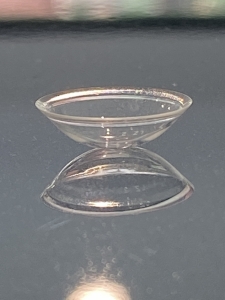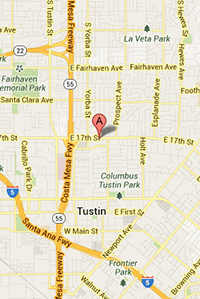All the above (see Glasses) discussed vision problems can also be addressed with contact lenses. Strong prescriptions are better corrected with contacts which are also advisable if there is a great disparity between the eyes. Contact lenses are used to improve cosmesis by using a variety of colored options or by simply eliminating the need for wearing a frame. Contacts are great for active individuals who play sports, swim, or live at the gym.
Having worked with thousands of surgical patients, Dr. Bender has a great deal of experience in this area and designs post-surgical lenses to maximize comfort and vision in such cases.
Contact lenses can be broken up into a few modalities.
Planned Replacement
Replacing lenses typically at a monthly interval. Lenses are taken out each night, cleaned, and stored in a disinfection solution. Under this category are rigid gas permeable lenses (RGP’s). These are hard contacts that are used for one year and replaced at each annual examination. RGP’s have the benefit of sharp vision and a smaller diameter design that is sometimes better for dry eyes.
- Spherical: mono-focal lenses used to correct distance vision for people who need full-time correction or want lenses for activities such as working out or practicing sports.
- Toric: mono-focal lenses used to correct astigmatism. Astigmatism is when the eye is shaped more oblique like a football rather than spherical like a basketball. An astigmatism prescription has an amount and a location designation from 0 to 180 degrees.
- Mono-vision: Using spherical lenses to help people over forty who have two prescriptions, one for distance and one for near. We prescribe the dominant eye for distance and the non-dominant for near. With both eyes open a patient can now function at both distances. The brain adapts to this lens combination over time, usually 1-2 weeks.
- Multifocal: For those who cannot get used to mono-vision (10-15%), we use a multifocal contact lens type. Like progressive glasses, these provide distance and near in the same lens. Using a simultaneous vision design, the patient sees both far and near through the same lens. These soft lenses have a reading zone through the center surrounded by distance at the perimeter. They work very well for computer use.
Daily Disposable
Having a new, fresh lens every day. Dispose at the end of the day. No cleaning or storing needed! Our most popular modality.
- Spherical: same as above
- Toric: same as above
- Mono-vision: same as above
Corneal Refractive Therapy
Also known as orthokeratology, is a vision correction procedure that takes advantage of the cornea’s pliable structure. Corneal Refractive Therapy is the use of lenses while you are sleeping to reshape the cornea to provide clear vision upon waking and removal of the lenses.
This is akin to laser surgery without the surgery. While the effect is temporary, it lasts throughout the day. Great for kids during sports activities, especially water sports and high impact activities. Parents do not need to worry about lens use during the day as they are worn during sleep (6 hour minimum to produce the effect). This way parents can always monitor lens wear.
This procedure is also great for dry eyes as you wear the lenses much less than soft contacts during the day (typical wear time is 16 hours for soft lenses). Adults use these too, especially those who do not want surgery done or those who are not good candidates for surgery.
Keratoconus
This disorder involves a progressive steepening and thinning of the cornea characterized by blurred vision and difficulty using the standard vision correction modalities of glasses and contacts. Therefore, we use custom designed hard and soft contacts for you to enjoy comfortable and clear vision. We use the latest technology in corneal topographers to map the front surface of the eye and then determine the best type of lens for you.
Kerasoft
Soft contact lens technology that can be custom ordered for any prescription. The benefit of this lens is the comfort as compared to traditional hard lens designs. This extends the wear-time and decreases the chances of scarring.
Apex
This is our suggestion for custom hard lens correction. The lens is a traditional 3 point touch approach to suitable for this disorder. We offer a range of materials and plasma coat every lens.
Scleral lenses
These are large lenses that fit over the cornea and touch down onto the white of the eye. They do not rest on the front cornea. Bypassing the cornea allows corneal irregularities such as keratoconus and post surgical eyes to be best corrected.
Post-Surgical Design
Patients who have had refractive surgeries or other corneal operations often cannot use standard contact lenses. This is because their surgery has left them with an abnormal eye shape.



